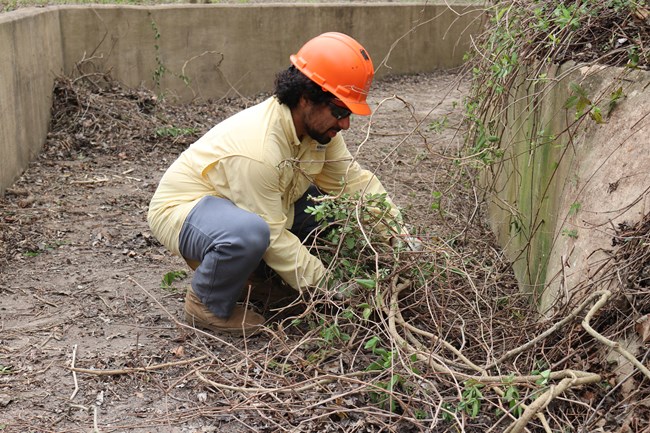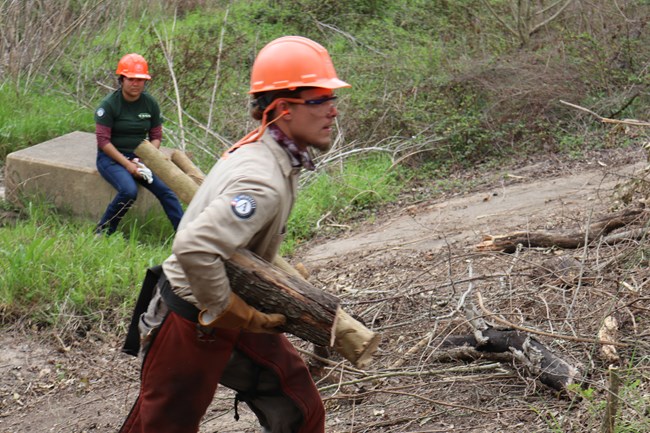
NPS Photo. Controlling Nonnative Plant SpeciesAs the number of people occupying south central Texas has increased over the past 250 years, so in turn, have the number of non-native plants. These plants were often introduced as garden plants, or as a potential food source for cattle. Once planted, many took hold in the warm, often humid, climate of South Texas, and quickly spread. Approximately 18 percent of the plants in the park are non-native species. Four predominant ones are; chinaberry, glossy privet, giant reed and johnsongrass. However, the park's aggressive campaign to control Chinaberry, privet, and other woody species has largely eliminated all mature trees. Cut stumps and young trees were sprayed with herbicides, and seedlings will continue to be sprayed or hand-pulled. Many of the cut areas have been re-vegetated with native plant species. 
NPS Photo
The park is also trying to control herbaceous plants, such as Japanese honeysuckle, johnsongrass, giant reed, and bamboo. One of the park's two bamboo patches is gone and the elimination of the other is underway. For this plant control work a variety of labor sources is used, including park staff, contractors, and seasonal hires. |
Last updated: May 5, 2025
